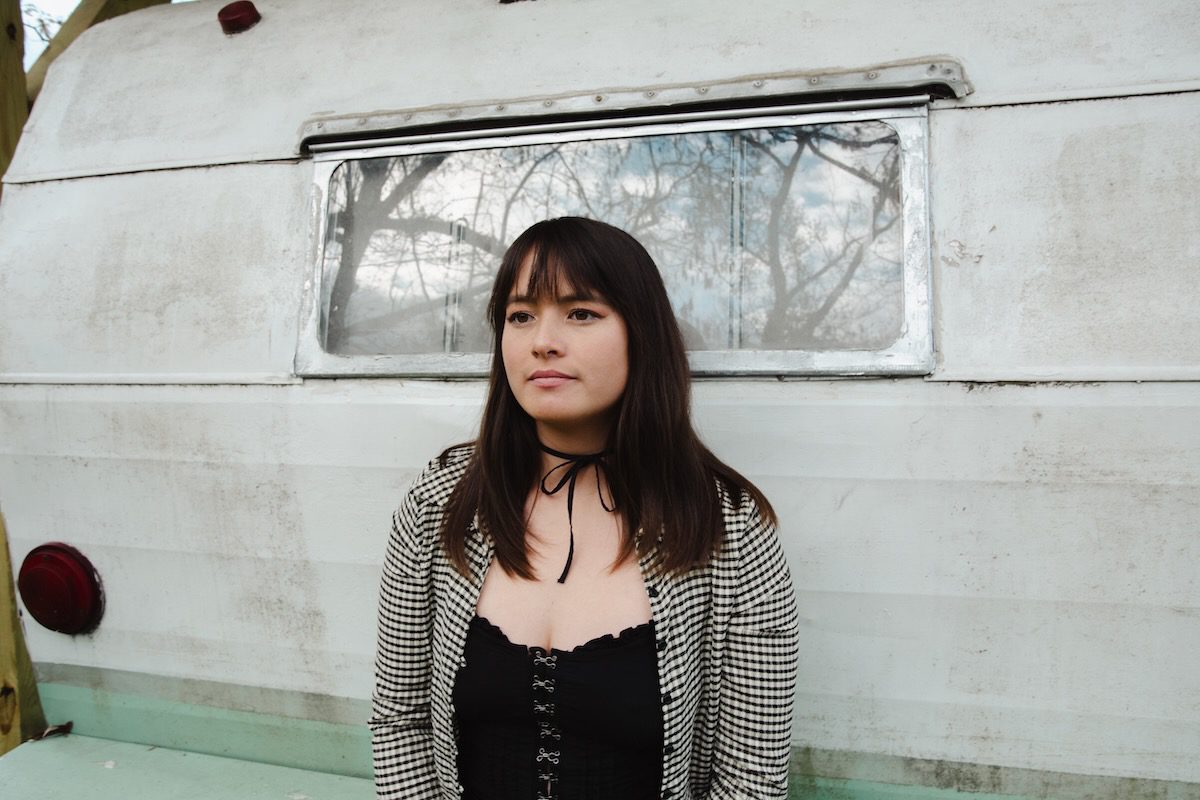SPOTLIGHT: AJ Lee on Being an Asian American Woman in Bluegrass

AJ Lee (photo by Natia Cinco)
EDITOR’S NOTE: AJ Lee and Blue Summit is No Depression’s Spotlight band for July 2024. Learn more about the band and their new album, City of Glass, in our interview, and watch a video of them performing “Hillside” from the top of a mountain outside the Telluride Bluegrass festival.
Being an Asian American woman in the bluegrass music industry is a narrative of diversity, resilience, and cultural fusion. I was raised in Tracy, California, on an acre of land with horses, chickens, dogs, cats, rats, and possums. My mom was born in Kentucky and my dad was born in Burma, now known as Myanmar. My dad’s family emigrated from Burma to San Francisco in July 1971 to escape persecution by anti-Chinese groups. Because my dad’s aunt offered to sponsor the family in the States, they were able to legally seek refuge. The first to arrive was my grandpa; my uncles John and Jimmy; and my dad, Rodney. They were followed a year later by most of the family. Through years of working odd jobs, my family was able to restore a decent living. They persevered through hardships brought on by ethnic conflict. Eventually my dad graduated college and got a job working IT for the medical technology company Becton Dickinson. My dad met my mom “on a volleyball court,” as my mom tells me, fell in love, and had me. I’m the youngest of four half-siblings, the baby of the family, and, of course, the self-proclaimed favorite.
My grandpa was born in Taishan, Guangdong, formerly known as Canton, China, in 1926. He went to college to become a teacher then, around the time World War II ended, moved to Burma, where he met my grandmother. In 1948, Burma gained independence from the United Kingdom. My half “Asian side” ethnically is of Chinese descent, which was the predominant demographic of business owners in Burma at the time. Eventually tensions between native Burmese and Chinese residents grew due to financial frustrations and unwelcome Chinese cultural influence on the dominant Burmese population. This led to anti-Chinese riots in the 1960s. My grandpa’s family was living in Rangoon at the time — the epicenter of the 1967 anti-Chinese riots. When my Uncle John was 12, a group led by a Chinese teachers union held a gathering near the building where he lived. Traditional Chinese songs filled the air. A Burmese mob responded to the demonstration and all the union participants were killed. Fortunately, my uncle and the rest of the family found support from local shops below the building and hid in the basement until the violence subsided.
Now, about bluegrass: This genre combines elements of Irish, Scottish, and English music with influences from African American blues and jazz, creating a unique sound characterized by quick tempos, acoustic instruments, and “high lonesome” harmonies. It has roots deeply embedded in the Appalachian region and has long been associated with a predominantly white, male demographic. My cultural heritage and my acceptance of the challenges of being not only a woman, but an Asian American woman in bluegrass continue to shape my musical experience.
I have noticed, as an Asian American woman, I sometimes face initial surprise from audiences and fellow musicians alike. Even though I have spent most of my life running in bluegrass circles, the assumption that I might not fully grasp the genre’s cultural significance or musical intricacies is something I encounter. These interactions have become more rare as I continue to break into the professional bluegrass and Americana scene, but I have accepted that it is a reality I could face for the rest of my life.
Aside from the regular tired misogyny of drunken fan interactions, I often receive stereotyping based on appearance. People who have watched me play an entire set of music will walk up to other young Asian women in the room and congratulate them on a great set.
Our tour manager, Helen, who doesn’t look like me but is also Asian American, gets it the most. Comments like “nice job on the set today” or “I love your band” or “I’ve been watching you on YouTube since you were little” — she gets mistaken for me at shows at almost every location. We usually get a good laugh out of fans who can’t tell us apart even though our physical differences are pretty obvious to those who care to see them. I’m only half Asian, for goodness sake!
These moments aside, I believe I bring a unique perspective to bluegrass. I feel that my background contributes to a more varied sound and storytelling within the genre. Musicians like Laurie Lewis, Kathy Kallick, Alison Krauss, Rhonda Vincent, Sierra Hull, and Molly Tuttle, to name a few, have already paved the way for women in bluegrass, but the presence of Asian American women in the genre adds another layer. Strides have been made in recent years to remove gender and racial bias, but it’s up to the entire bluegrass community to make a concerted effort to promote diversity and inclusion. I’m exceptionally happy to see our friends in the Korean band Country Gongbang getting recognition in the States. I am very excited to watch the evolution of this genre, and I hope my story may serve as an inspiration to women of all ethnicities in this industry.





